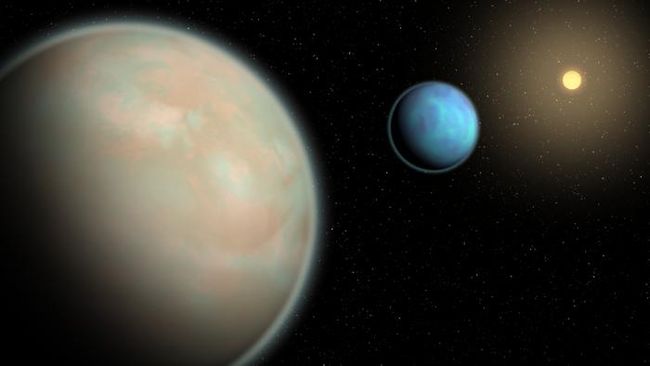Exoplanet ‘Haze’ Poses Challenges in Detecting Water on Alien Worlds, but Scientists Offer a Potential Solution
The presence of hazy atmospheres could hinder our capacity to pinpoint water on distant planets.

One of the primary objectives of the James Webb Space Telescope (JWST) is to examine the atmospheres of exoplanets in search of signs of habitability. Given that water is a crucial component for life, detecting its presence in and around alien worlds is a top priority for planetary scientists. However, a significant challenge arises due to a seemingly inconspicuous factor – haze. The presence of organic hazes with diverse chemical compositions in the atmospheres of exoplanets can potentially impede our ability to identify water and other indicators of habitability. To address this issue, researchers have been conducting simulations of these hazy conditions in Earth-based laboratories. These simulations aim to assist scientists in understanding and modeling the formation and evolution of water in exoplanet atmospheres.
Chao He, a researcher at Johns Hopkins University and the lead author of a study on these simulations, emphasized the complexity introduced by haze in observations. “Water is the first thing we look for when we’re trying to see if a planet is habitable, and there are already exciting observations of water in exoplanet atmospheres. But our experiments and modeling suggest these planets most likely also contain haze,” said He. The haze complicates observations by obscuring the view of an exoplanet’s atmospheric chemistry and molecular features.
The researchers focused on how hazes might impact the optical properties of spectra emitted by exoplanets hosting water in their atmospheres. They conducted experiments in a specially designed chamber to observe how hazes could form on watery planets and distort observations of critical substances in exoplanet atmospheres. The team created gas mixtures containing water vapor and other compounds common on exoplanets, exposing the mixture to ultraviolet light to simulate the effects of nearby starlight on an exoplanet’s atmosphere. The resulting data matched the chemical signature of a well-studied exoplanet, GJ 1214 b, indicating that organic haze may be influencing our observations of various planets’ atmospheres.
Acknowledging the diverse atmospheric compositions of exoplanets, researchers plan to generate additional lab-made haze “analogs” to further comprehend how this planetary feature might impact observations from our Earthly perspective, influencing our conclusions about habitability on other worlds.
The research was published on Nov. 27 in the journal Nature Astronomy.
Do not forget to share your opinion with us to provide you with the best posts !




0 Comments